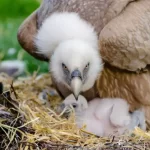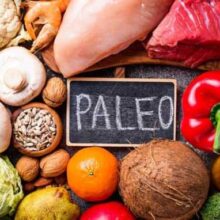Bird Flu Kills Farm Cats As Highly Pathogenic H5N1 Hits Yet Another Species
The post Bird Flu Kills Farm Cats As Highly Pathogenic H5N1 Hits Yet Another Species appeared first on Healthy Holistic Living.
Mysterious deaths among farm cats in Texas have unveiled a troubling twist in the tale of H5N1 avian flu—a pathogen that, until now, seemed a distant concern primarily for birds and the occasional human case. What began as an isolated incident on a dairy farm has quickly spiraled into a complex web of infection, touching species no one expected. This development not only hints at the unpredictable nature of zoonotic diseases but also challenges our perceptions of everyday safety and animal health interactions. As we peel back the layers of this evolving story, it becomes clear that something far more pervasive lurks beneath the surface, demanding a closer look from the global health community.
The Unseen Threat in Dairy Farms
In early 2024, a troubling discovery on dairy farms in Texas, Kansas, and New Mexico highlighted a new risk in agricultural practices: the transmission of the H5N1 avian influenza virus, not just among birds but to cattle as well. This marked the first instances of such transmissions in the United States, raising significant concerns within both agricultural and public health communities. Dairy cows exhibited symptoms such as decreased appetite and milk production, which notably affected the color and texture of the milk, turning it yellowish and thickened. Recovery was generally swift, but the presence of the virus in cattle posed a risk of broader transmission.
The incidents sparked a coordinated response from the U.S. Department of Agriculture (USDA), Food and Drug Administration (FDA), and the Centers for Disease Control and Prevention (CDC), focusing on understanding the spread and managing the risks associated with this zoonotic disease. Investigations revealed that the virus found in these cattle was genetically similar to strains found in wild birds, suggesting that infected wild birds likely introduced the virus to the cattle. This connection underscores the complex interactions between wildlife and livestock that can facilitate the spread of pathogens.
To manage the risk and prevent the spread to humans, stringent measures were put into place. These included monitoring and testing livestock, ensuring that milk from infected or symptomatic cattle did not enter the human food supply chain. The milk safety protocols were reinforced by the pasteurization process, which has been effective in neutralizing a wide array of pathogens, including the H5N1 virus. The FDA and USDA assured the public that the commercial milk supply remained safe, highlighting the effectiveness of existing safety standards and the additional precautions taken in response to the outbreak.
This incident serves as a critical reminder of the vulnerabilities in our food supply systems and the importance of surveillance and quick response in preventing potential health crises. It highlights the need for ongoing research and adaptation of safety protocols to address the ever-evolving nature of zoonotic diseases, ensuring public health while maintaining a stable food supply.
Cross-Species Transmission: From Cows to Cats
The emerging pattern of H5N1 avian flu spreading from cows to cats represents a concerning evolution in the behavior of this virus, illustrating the complex and often unexpected pathways through which zoonotic diseases can spread. Initially observed in a Texas dairy farm and subsequently in other states, this phenomenon has been confirmed through rigorous scientific examination.
Investigations at affected dairy farms revealed that the domestic cats contracted the H5N1 virus not from direct contact with infected birds, as might be expected, but rather through the consumption of raw milk or colostrum from infected dairy cows. This fluid was found to contain a high viral load, sufficient to transmit the virus to the cats consuming it. The severity of the situation was highlighted by the rapid decline and subsequent death of several affected cats, which displayed symptoms such as neurological issues and severe respiratory distress soon after ingestion of the contaminated milk.
Pathological examinations and genetic sequencing have further confirmed these transmission routes. The analysis demonstrated that the virus strains found in cats were genetically similar to those detected in the dairy cattle, underscoring the direct link between the ingestion of contaminated milk and the infection in cats. This transmission route is particularly alarming as it suggests the potential for broader mammal-to-mammal spread of the virus within mixed agricultural settings.
These findings have significant implications for public health and veterinary practices, highlighting the need for strict control measures on farms to prevent the spread of the virus among different species. They also stress the importance of ongoing surveillance and research to better understand the dynamics of H5N1 transmission and to develop strategies to mitigate its spread.
The situation is a stark reminder of the risks associated with consuming unpasteurized animal products and the complex interplay between agricultural practices and wildlife, which can create opportunities for zoonotic pathogens to cross species barriers.
Scientific Analysis and Findings
Recent studies have illuminated the complex pathology and transmission dynamics of the H5N1 avian flu in both dairy cattle and cats. Through detailed microscopic examination, scientists have observed significant lesions in the mammary glands of affected cows, characterized by epithelial degeneration, necrosis, and neutrophilic inflammation. These findings suggest a pronounced immune response to the viral infection, which not only impacts the health of the cows but also the quality of milk they produce.
Similarly, in cats that have contracted the virus through consumption of contaminated milk, severe pathologies including meningeal hemorrhages and gastrointestinal complications were documented. These findings indicate the severity of the infection in felines and underscore the high virulence of the H5N1 strain involved.
Genetic analysis has been pivotal in understanding the spread and mutation of the virus. Recent sequencing of H5N1 samples from both cows and cats has revealed close genetic similarities to strains found in wild birds, confirming the inter-species transmission pathways. This genetic tracing helps in identifying potential sources and routes of infection, thereby aiding in better management and control of the outbreak.
Moreover, susceptibility tests have demonstrated that the H5N1 virus involved is responsive to common antiviral drugs used in treating influenza, such as neuraminidase inhibitors. This is crucial for developing treatment protocols and preventive measures for both human and animal health in regions affected by the virus.
The implications of these findings are profound, emphasizing the need for stringent biosecurity measures on farms to prevent the spread of the virus among different species. It also highlights the importance of ongoing surveillance and rapid response strategies to contain such outbreaks before they pose larger public health risks.
The ongoing research and data collection by health authorities and veterinary experts continue to provide critical insights into managing the current outbreak and preventing future incidents. This collective effort is essential in safeguarding both animal and public health against the evolving threat of H5N1 avian influenza.
Global Concerns and Wider Implications
The H5N1 avian influenza continues to pose significant global health risks, not just to animal populations but potentially to humans as well. The virus has been reported in 67 countries across five continents since 2022, affecting not only poultry but also wild birds, and more recently, various mammal species including seals and minks. This extensive spread raises concerns about the virus’s ability to jump across species barriers and potentially increase its adaptability to humans.
International health organizations, including the World Health Organization (WHO), the Food and Agriculture Organization (FAO), and the World Organisation for Animal Health (WOAH), are intensively monitoring these developments. They have noted the virus’s enhanced capabilities, such as mutations that might allow it to replicate more effectively in mammalian cells, though it has not yet shown increased preference for human-like receptors. This ongoing evolution of the virus underscores the necessity for vigilance and preparedness at a global level.
In response to these challenges, global health leaders are advocating for robust surveillance systems to monitor the virus closely and detect any changes that might signify an increased threat to humans. This includes genetic surveillance to track mutations and antiviral resistance patterns, as well as increased biosecurity measures to control the spread of the virus among poultry and wild birds.
Moreover, the WHO has initiated plans to stockpile vaccines tailored to combat H5 strains, recognizing the potential need to respond quickly should the virus start spreading among humans more efficiently. These vaccines are designed to offer cross-protection against various strains, highlighting the proactive measures being taken to safeguard public health in the face of this unpredictable virus.
The continuous global spread of H5N1 and its episodic spillovers to humans through direct contact with infected animals or environments highlight an urgent need for coordinated international efforts to manage and mitigate the risks associated with this virus. The situation calls for a unified strategy that includes disease surveillance, rapid response to outbreaks, and public health preparedness to manage potential human cases of H5N1 avian influenza. This scenario represents a complex and evolving threat that requires ongoing attention and action from global health authorities to prevent a potential health crisis.
Preventative Measures and Recommendations for H5N1 Avian Flu
In response to the ongoing challenges posed by H5N1 avian influenza, various health agencies have outlined crucial preventive measures and recommendations to mitigate the spread of the virus among animals and prevent transmission to humans. Here’s a comprehensive overview of these guidelines:
Surveillance and Testing
Health authorities emphasize the importance of vigilant monitoring for signs of H5N1 in both domestic and wild animals. This includes routine surveillance and immediate testing if animals display symptoms of respiratory illness or other signs consistent with avian influenza. Testing protocols involve reverse-transcription polymerase chain reaction (RT-PCR) assays to confirm the presence of the virus. People who have been in close contact with potentially infected animals are also advised to monitor for respiratory symptoms for a period following exposure.
Infection Prevention and Control
For individuals working directly with animals, especially in settings like poultry farms or veterinary clinics, strict adherence to personal protective equipment (PPE) is crucial. This includes wearing appropriate respiratory and eye protection to avoid direct contact with infected animals or contaminated surfaces. Regular hand washing and sanitation measures are also critical to prevent the spread of the virus.
Handling and Consumption of Animal Products
The CDC advises that properly handling and cooking animal products is essential to prevent infection. Poultry and eggs, for example, should be cooked to an internal temperature of 165˚F to ensure that all viruses and bacteria are killed. The public is also cautioned against the consumption of raw milk or undercooked animal products, which can be potential sources of infection.
Public Health Response
In the event of an outbreak, rapid response strategies include the quarantine of affected areas, culling of infected animals, and the deployment of vaccination campaigns where applicable. These measures are designed to control the spread of the virus among animal populations and minimize the risk to human health.
Ongoing Research and Vaccine Development
Efforts are ongoing to develop effective vaccines against H5N1, particularly for at-risk populations and possibly for general use if the virus shows signs of becoming more transmissible among humans. Research into antiviral drugs also continues, with existing medications like oseltamivir being stockpiled and administered in cases of suspected human infection.
Everyday Tips to Protect Yourself and Your Pets from H5N1 Avian Flu
While the threat of H5N1 avian flu might sound distant and primarily a concern for health professionals and farmers, there are straightforward steps that everyone can take to reduce their risk of exposure and help prevent the spread of this virus:
Stay Informed: Keep up with local news about bird flu outbreaks in your area. Knowledge about affected regions can help you avoid potential exposure.
Practice Good Hygiene: Regular hand washing is crucial. After visiting farms, parks, or interacting with animals, ensure you wash your hands thoroughly with soap and water.
Handle Food Safely: Cook poultry and eggs thoroughly. Ensure that chicken reaches an internal temperature of 165°F to kill any potential viruses.
Watch Your Pets: Be cautious about your pets interacting with wildlife or consuming raw products. If you live near wildlife, monitor your pets’ health closely and consult a vet if they show unusual symptoms.
Avoid Contact with Sick Animals: If you encounter dead or visibly sick birds, do not touch them. Report them to local wildlife authorities or health departments.
Educate Family and Friends: Share information with family and friends about the risks of bird flu and how they can take preventive measures.
By incorporating these simple but effective practices into daily routines, you and your community can stay safer from the potential spread of avian flu. These tips aim to empower you with practical actions that contribute to personal and public health safety.
Staying Ahead of H5N1
As the H5N1 avian flu continues to affect diverse species across the globe, understanding and implementing preventative measures becomes crucial to curbing its spread and mitigating potential impacts on both animal and human health. The multi-faceted approach involving enhanced surveillance, stringent biosecurity measures, public health preparedness, and individual precautions is key to managing this global health challenge.
Collaboration and communication among international health organizations, governments, health professionals, and the public are essential. By maintaining vigilance, enhancing response capabilities, and fostering global cooperation, we can effectively manage the risks associated with H5N1 and prevent it from becoming a more significant threat to global health.
The lessons learned from managing H5N1 also underscore the importance of a One Health approach, which recognizes the interconnectedness of the health of people, animals, and ecosystems. As we continue to navigate the complexities of zoonotic diseases, the strategies we refine and the knowledge we gain from the ongoing fight against H5N1 will be invaluable in enhancing our readiness for future outbreaks, ensuring that both animal and human populations can thrive in a health-secured world.
The post Bird Flu Kills Farm Cats As Highly Pathogenic H5N1 Hits Yet Another Species appeared first on Healthy Holistic Living.










